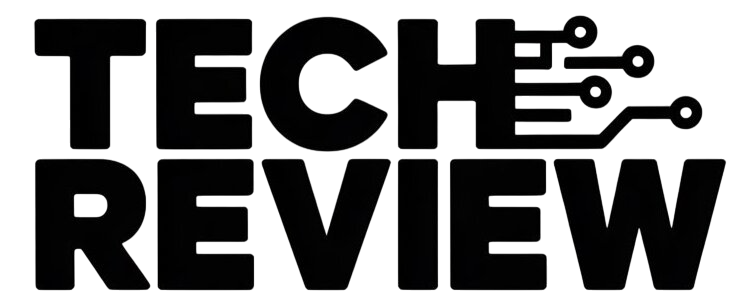By March 2025, Mubarak Umar had spent a year and a half working as a supplier agent for Sun King, a solar company in Ibadan, western Nigeria, earning about ₦200,000 ($126) monthly, paid directly into his GTBank account. Earlier in the year, he conceived the idea to open an electronics store and believed his consistent income and banking history would qualify him for a sizable loan from his bank. But when he applied, he found he could borrow no more than ₦120,000, far below the ₦2 million he wanted.
He turned to PalmPay and Opay for a quick loan, the fintech apps he often borrowed from, but was also offered modest amounts of ₦23,000 and ₦8,000, respectively.
“It surprised me that [the] bank I have been using for over ten years couldn’t offer me such an amount, not even half of it,” Umar said. “The mobile apps too have never lent me more than ₦35,000, although I use them for daily major transactions. It is like we are the only ones that trust them; they don’t trust us.”
Every day, many Nigerians like Umar seek loans from banks or tap their smartphones to apply for quick loans from digital lenders. Unbeknownst to the loan seekers, the decision on how much they can borrow isn’t always entirely made by humans. Lenders are increasingly employing tech systems that use customers’ data to calculate their credit score and determine how much they can afford to borrow.
The technology that decides a customer’s borrowing power depends on whether they borrow from a traditional bank or a loan app. While the former rely on systems that assess structured-income verification and credit history for loan limits, the latter explore digital footprint and mobile phone data with algorithms that scan through a customer’s smartphone analysing app usage and accessing contact lists.
Traditional banks in Nigeria mainly give loans to corporate clients, salary earners who have at least one year of salary history, or are employed by companies affiliated with the bank, according to a bank staff. This practice often excludes micro, small, and medium enterprises (MSMEs), as well as informal sector workers, who may not meet these criteria.
TechCabal’s analysis of the 2023 annual reports of Nigeria’s leading banks—FirstBank, UBA, GTBank, Access Bank, and Zenith Bank—shows a strong preference for corporate lending over retail or individual lending.
In 2023, FirstBank allocated 94% of its ₦6.6 trillion loan portfolio to corporate borrowers, giving just 6% to individuals and small businesses. UBA followed a similar pattern, giving 70% of its ₦5.5 trillion loan book to corporates. Access Bank’s 2023 audited financials show that it committed 88% of its ₦8 trillion loans to corporate clients, with only 12% going to retail borrowers. GTBank’s loan portfolio was 69.4% corporate and 24.1% retail.
Abdulhakeem Abdulmajeed, a product manager at The Alternative Bank, said traditional banks remain cautious in lending to the broader population due to the inherent risks in credit recovery. “Banks are deposit collectors, not investment funds, so they must be extremely careful with where they put these funds to ensure depositors can access their money at any time,” he said.
He added that banks avoid high-risk individuals and sectors likely to default on loan repayment to protect their liquidity and maintain regulatory standards. Unlike fintechs that cushion loan defaults with high interest rates, “banks must keep default rates below 5%; that makes them more selective with who gets access to their credit,” Abdulmajeed said.
For eligible customers, banks use rule-based credit scoring systems that evaluate customers’ turnover, and use the Central Bank of Nigeria’s (CBN) credit check software to scrutinise the customer’s account for past credit with their BVN. “The customer must have an account with the bank, and we look at their account turnover of the amounts coming in and going out from their account each month. We also do a credit check to see if the customer has a history of default,” said Obayemi Gbenga, a loan desk officer at Keystone Bank.
The average of a customer’s turnover and credit history rating determine the loan limit the customer could borrow. The lower the credit score is, the higher the risk of the customer defaulting on the repayment, and vice versa.
According to CreditRegistry, a credit bureau licensed by the CBN, credit scores range from 300 to 900, with scores above 700 considered good and those below 500 regarded as poor.
Gbenga stated that a customer’s monthly turnover is expected to be at least twice the amount he intends to borrow, as this indicates their repayment capacity.
He explained that if the turnover with the bank falls short, the loan desk uses a system to check the customer’s accounts in other banks and fintech platforms to assess their overall financial activity. “Everybody has only one BVN; inputting the customer’s BVN on the [credit check] software will bring all past credit history across all banks, including digital lending apps,” Gbenga said. “But for a business or company, the system uses the Corporate Affairs Commission’s registration number to access the company’s borrowing history, while using the BVN for the personal credit history of the owner of the business or company.”
Digital lenders rely on tech-driven data to offer loans
Unlike traditional banks that largely restrict loans to customers with salary income and formal credit histories, fintechs like PalmPay, OPay, FairMoney, and other digital lenders use behaviour-based algorithms and smartphone data to assess creditworthiness.
The lender uses algorithmic credit scoring systems powered by machine learning, which collect customer’s data—SMS alerts, contacts, apps usage, device information, and location—accessed with the customer’s permission, which they consent to while agreeing to the app terms during signup.
Some lenders also use apps that require customers’ BVN or request access to bank statements through APIs to provide more formal financial insights. The data determines the credit limit, sets the interest rate, and defines repayment schedules.
Despite digital lending offering collateral-free loans, zero paperwork, and approval within minutes, it often comes with very high interest rates. These rates are not fixed but are dynamically determined by algorithms that assess a borrower’s risk level from behavioural and financial data. As a result, the same customer may get different interest rates for the same loan amounts at different times, depending not only on the amount borrowed, but on how risky the system judges their updated data.
“I have an overdue loan with Opay, so they can’t lend me until I pay up,” said Blessing Efiete, a usual borrower from digital lenders. “And for PalmPay, I just repaid their ₦15,000 loan; they are bringing me a ₦1,000 loan limit offer now because the last loan was overdue before I repaid, and I haven’t done many transactions for almost a month now,” Efiete said.
The credit limit offers are usually small for first-time borrowers, with short repayment periods and options. The in-app algorithms keep monitoring customers’ activities over the repayment window. And when the repayment due date approaches, an in-app automated system issues a notification for reminders.
When repayment is delayed, the system triggers recovery actions such as nudges, automated calls, and reminder text messages to prompt the customer. In cases of default, interest continues to accrue over time.
Automated recovery actions replaced debt shaming
In past cases, the price of default on a loan repayment is that borrowers are subjected to humiliating tactics, involving lenders engaged in debt shaming, calling and sending threatening messages not only to defaulters but also to their phone contacts.
These practices have sparked public outrage and raised serious concerns about data privacy violations and unethical debt recovery methods, prompting regulatory scrutiny from bodies like the Federal Competition and Consumer Protection Commission (FCCPC). However, there are still a few such tactics where borrowers receive threatening calls and curse-like text messages.
“There is usually a computer voice call reminding me to repay my loan,” said Efiete. “Around March, when I still owed them (referring to PalmPay), I got messages [where] they were cursing me, saying I should pay them if I don’t want a downfall for myself.”
However, the digital lenders are shifting away from the debt shaming practices and adopting automated recovery systems. The move marks a significant step toward more responsible lending in Nigeria.
For fintech like PalmPay, when a borrower connects his bank to the app, the system sets up an auto-deduction from their bank account when the loan is overdue.
“I often borrow from PalmPay, so I linked it to my Access Bank account. When the loan is due, they try to auto-debit almost every day. If there is money in the account, it is deducted immediately to repay the loan. If not, the attempt fails, but you will still see it recorded in your transaction history,” Ibrahim Adekunle said while scrolling through his transaction history to show this reporter.
A call for a tech-inclusive lending model
Experts say the future of lending in Nigeria could be shaped by data and improved technology that strengthen inclusive lending for both banks and digital lenders.
Abdulmajeed stated that cautions are necessary when using customers’ data to offer loans without violating their privacy. He added that a tech model capable of including informal players in rural areas, who are out of the formal and digital banking system, is essential.
“Rural dwellers, most of whom do not have a bank account, in that case, it is extremely hard for banks or any digital lender to determine the eligibility for credit because they do not have the necessary data,” he said. “But if we are able to find a way to help look at these peculiar cases and develop a credit scoring model that will work with people in that segment of the market.”
Lending provides economic growth opportunities
Abimbola Adewale, an economist, said the discriminatory access to loans marginalises MSMEs and informal players who lack formal documentation and structured-income flows, could hinder the country’s economic growth. This causes “severe financing constraints, limiting their capacity to scale, or contribute meaningfully to job creation and economic growth.”
He, however, iterates that collaboration between banks and fintechs could help scale financial lending inclusion. “Banks bring stability and infrastructure, while fintechs offer innovation and agility. By working together, they can create inclusive, data-driven lending models that serve both formal and informal sectors more effectively.”
Mark your calendars! Moonshot by TechCabal is back in Lagos on October 15–16! Join Africa’s top founders, creatives & tech leaders for 2 days of keynotes, mixers & future-forward ideas. Early bird tickets now 20% off—don’t snooze! moonshot.techcabal.com.



